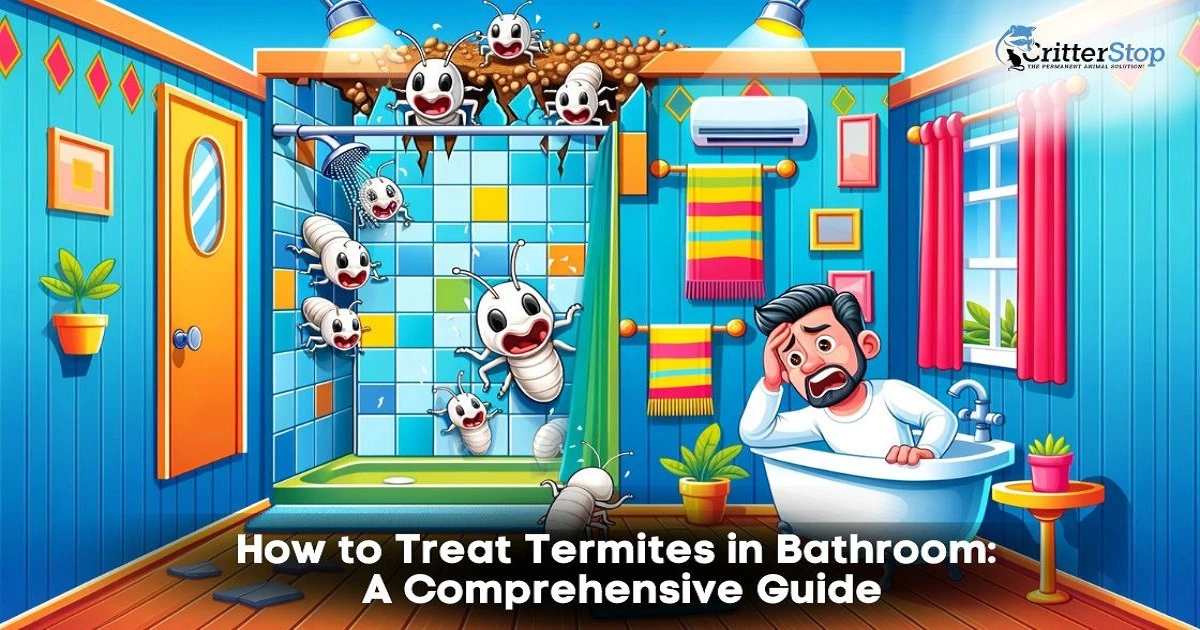
Termites are a common problem in many households, and they cause massive damage to your property if left untreated. Bathrooms are particularly vulnerable to termite infestations due to moisture and wood-based materials. If you've noticed signs of termites in your bathroom, taking action quickly is essential to prevent further damage and ensure your family's safety. This article will provide tips about how to treat termites in bathroom.
One of the first steps in treating termites in your bathroom is to identify the source of the infestation. Termites are drawn to moisture, so looking for leaks or standing water in your bathroom is essential. Once you've pinpointed the problem's source, you can begin to take steps to eliminate the termites. Several treatment options include chemical treatments, baits, and physical barriers. Each method has its ups and downs, so choosing the right one for your situation is essential.
Another crucial factor to consider when treating termites in your bathroom is prevention. Once you've eliminated the infestation, preventing future termite colony problems is important. This may include sealing cracks and crevices, installing moisture barriers, and regularly inspecting your bathroom for signs of termites. Being proactive regarding termite control can help protect your home and family from these pests' damage and health risks.
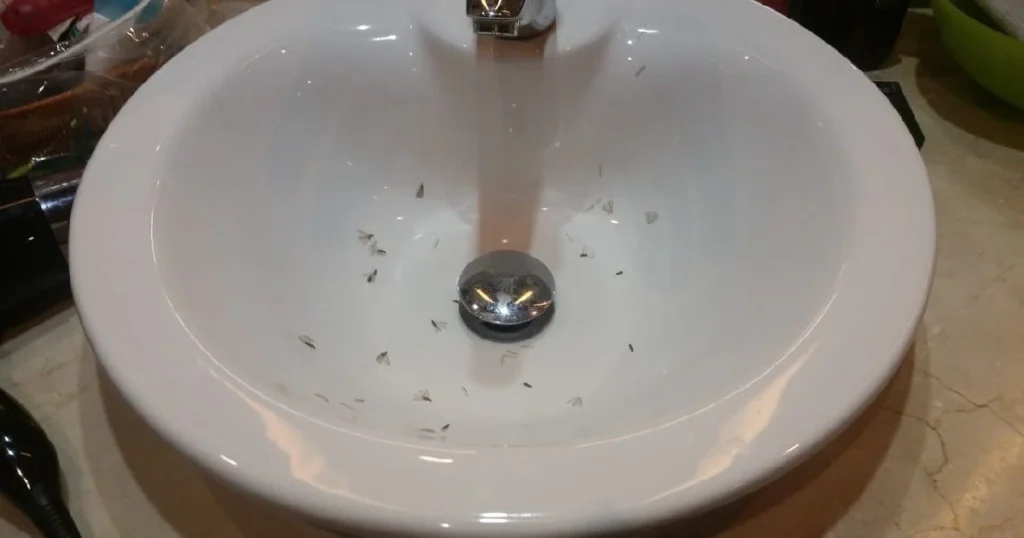
Termites can cause significant damage to a home's structure, and the bathroom is no exception. You must learn to identify the signs of a termite infestation in your bathroom to take action before the damage becomes too severe.
The most obvious sign of a termite infestation is the presence of mud tubes. These tubes, made of soil and wood, are used by termites to travel from their nest to their food source. If you see mud tubes in your bathroom, you likely have a termite problem.
Termite infestation is also signaled by the presence of discarded wings. Termites shed their wings after finding a place to establish a colony. If you see discarded wings in your bathroom, it is a sign that termites have already established a colony in your home.
These are other signs of a termite infestation to look for:
It is important to differentiate between termites and other pests, as each treatment method can vary significantly. Some pests that are commonly mistaken for termites include:
If you suspect a termite infestation in your bathroom, contact a professional pest control company for an inspection. They will confirm the insect's presence and recommend the best treatment options for your specific situation.
Remember, if you see subterranean termites, do not disturb it or attempt to treat the infestation yourself. Disturbing the termites can cause them to retreat and make it more difficult to eradicate the colony. Leave it to the professionals to handle the problem.
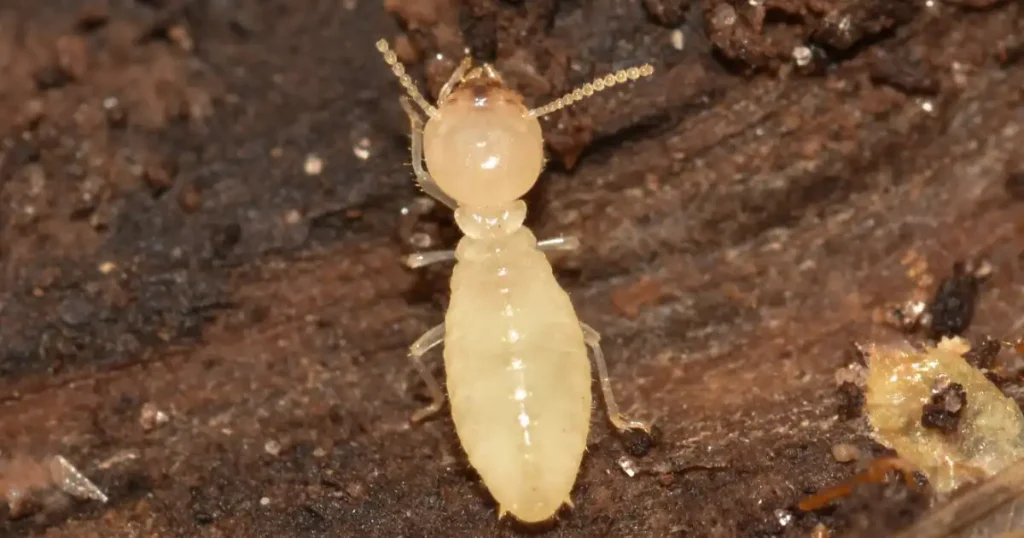
Termites in the bathroom can be treated using several local treatment options. You can classify these into two categories: chemical treatments and non-chemical treatments.
Chemical treatments involve using pesticides to kill termites. These treatments can be applied as liquids, foams, or dusts. Bifenthrin, fipronil, and imidacloprid are the most commonly used pesticides for termite control.
One of the most effective chemical treatments for termites is a liquid termiticide. This treatment involves drilling holes into the affected area and injecting the termiticide into the soil. The termiticide will kill any termites that come into contact with it and create a barrier preventing termites from entering the area.
Another chemical treatment option is a termite bait system. This type of treatment involves placing bait stations around the affected area. The bait contains a slow-acting toxin that the termites will bring to their colony to kill it completely.
Non-chemical treatments are a more environmentally friendly option for treating termites. These treatments involve using physical barriers or natural substances to repel or kill termites.
One non-chemical treatment option is the use of borate-treated wood. Borate is a substance toxic to termites. By treating the wood with borate, it becomes resistant to termite infestation.
Another non-chemical treatment option is physical barriers, such as stainless steel mesh or sand barriers. These create a physical obstacle that termites cannot penetrate, preventing them from entering the affected area.
In conclusion, several local treatment options are available for treating termites in the bathroom. Chemical treatments involve pesticides to kill termites, while non-chemical treatments use physical barriers or natural substances to repel or kill termites.
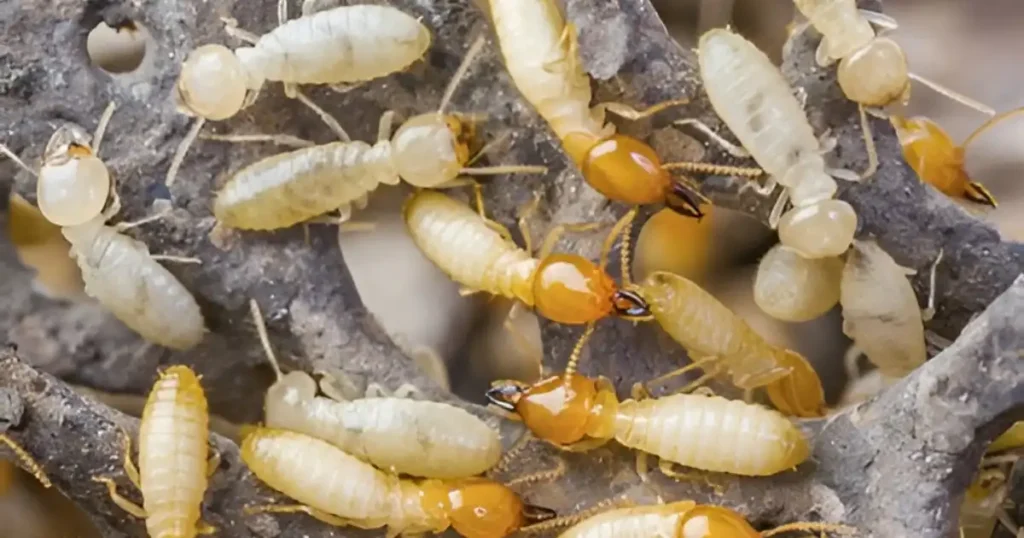
Calling a professional pest control agency is almost necessary to deal with a termite infestation in the bathroom. Conducting research and selecting a reliable firm with prior experience offering termite control services is essential. You should look for a company that is licensed and insured, and you should also inquire about references from prior clients.
During the initial consultation, the pest control technician will inspect the bathroom and surrounding areas to determine the severity of the infestation. They will use specialized equipment, like moisture meters and infrared cameras, to locate hidden termite activity. The technician will then recommend a treatment plan tailored to the specific situation.
Professional termite control typically involves the application of liquid termiticides to the affected areas. The technician may also install bait stations around the bathroom to monitor termite activity and attract termites away from the structure.
The treatment process can take several hours to complete. The size of the infestation usually determines the type of treatment used. Following the technician's instructions for preparing the bathroom and surrounding areas before and after treatment is important.
After the treatment is complete, the technician will schedule follow-up inspections to follow-up the effectiveness of the treatment and ensure that the termites have been eliminated.
Professional termite control is an effective way to treat a termite infestation in the bathroom. By choosing to hire a reputable pest control service and following their instructions, homeowners can protect their property from further damage and ensure a termite-free environment.
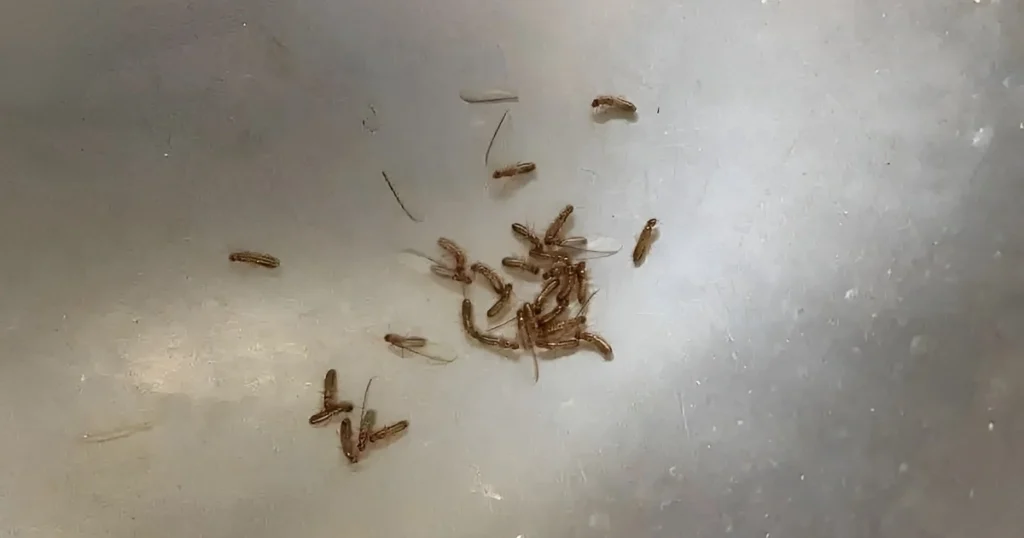
Termites in the bathroom can be a major headache for homeowners. You can take preventive measures to keep these pests at bay. Here are some of the things you can do:
Regular maintenance and inspection of your bathroom can help you detect termite activity early on and prevent it from spreading. It is important to inspect your bathroom regularly, especially if termites are common where you live. Keep your eyes peeled for signs of termite activity, such as mud tubes, damaged wood, and discarded wings.
If you find signs of termite activity, take action immediately. Contact a professional to inspect your home and recommend the best action.
Moisture is one of the main factors that attract termites to your bathroom. To prevent termite infestations, controlling moisture levels in your bathroom is important. Here’s some advice to help you control moisture in your bathroom:
Following these preventive measures can reduce the risk of termite infestations in your bathroom. However, if you find termites in your house, it is important to contact a professional pest control company to help you eliminate them.
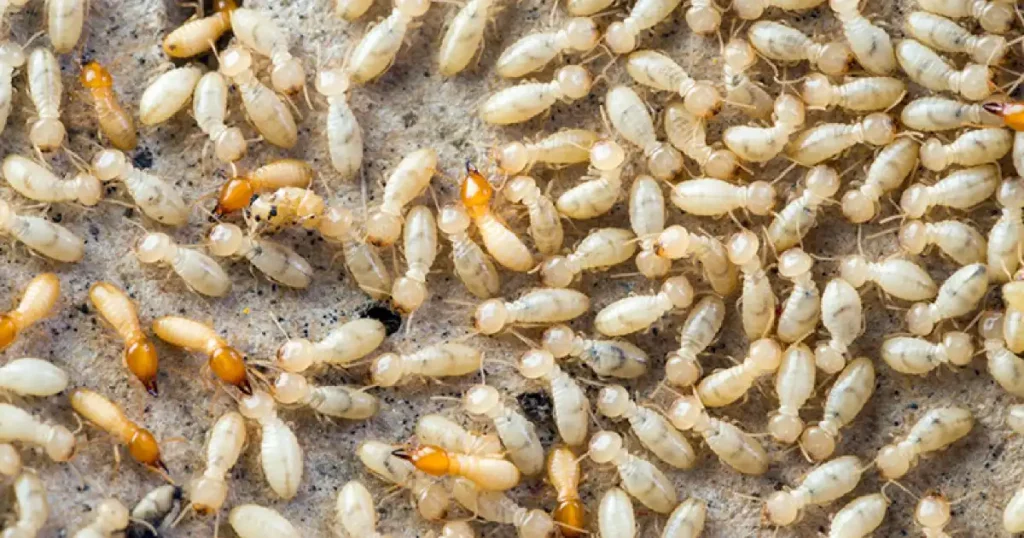
There are a few things to remember regarding termite treatment in apartments. First and foremost, it's important to identify the type of termite in the apartment. This can help you determine the best treatment method.
One option for termite treatment in apartments is the use of liquid termiticides. You must apply a liquid solution to the soil around the apartment building. The termites will come into contact with the solution and will be eliminated. Please note that this method may require multiple treatments to eradicate the termites.
You can also use bait stations. These are placed around the apartment building and contain a substance attractive to termites. The termites will consume the bait and bring it back to the colony, eliminating it entirely.
Taking preventative measures can help you avoid future termite infestations. Make sure to seal any cracks or gaps in the apartment building, remove any wood debris or cellulose materials around the building, and keep the apartment clean and free of excess moisture.
Overall, treating termites in apartments requires a thorough understanding of the type of termite present and the most effective treatment methods. By taking preventative measures and utilizing effective treatment options, termites can be eliminated and future infestations prevented.
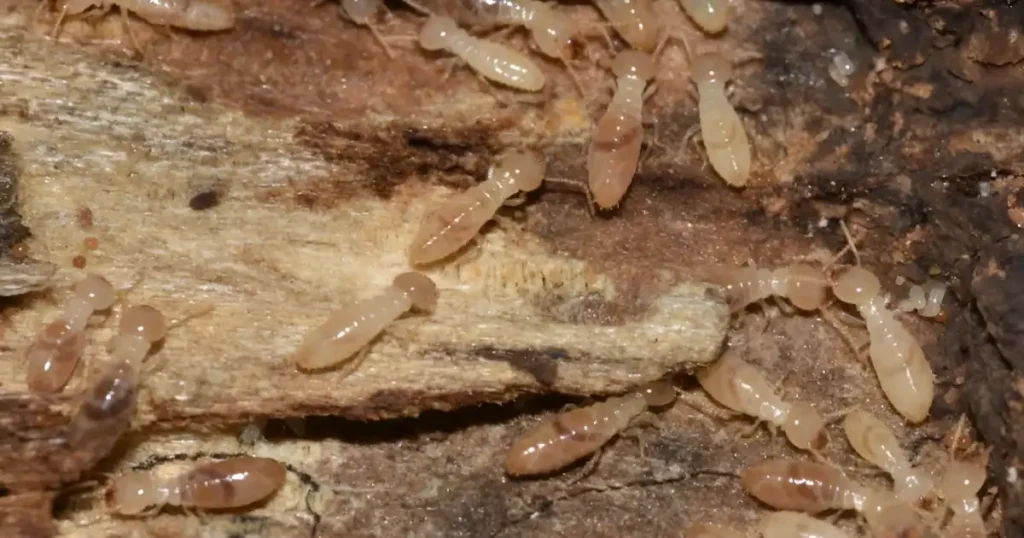
Sometimes DIY solutions like bait boxes may not completely eradicate the problem when dealing with mice. This is where Critter Stop, a professional and humane wildlife removal company, comes into play. Critter Stop offers comprehensive pest control services that extend beyond simple bait setups to tackle the root of your infestation with sustainable and effective strategies.
Critter Stop has earned a fantastic reputation, backed by stellar customer reviews online, for providing high-quality work and exceptional customer service. These accolades come from our commitment to solving each client's unique pest challenges thoroughly and humanely.
Don't hesitate to take action if you're struggling with persistent rodents or other wildlife issues. Contact Critter Stop at (214) 234-2616 for a free termite inspection. Our experienced team is ready to assess your situation and recommend the best to reclaim your property from unwanted guests.
If you suspect you have termites in your bathroom, acting quickly to prevent further damage is important. One effective treatment option is to use a liquid termiticide, which can be applied directly to the affected area. Following the instructions carefully and wearing protective gear when applying the termiticide is important.
If you find termites in your house, it is important to contact a pest control professional immediately. They can assess the extent of the infestation and recommend the best treatment options. It is important not to disturb the termites, as this can cause them to spread to other areas of your home.
While many natural remedies are said to be effective against termites, it is important to note that they have not been scientifically proven effective. Natural remedies commonly used include orange oil, neem oil, and vinegar. However, consulting a pest control professional before using any natural remedies is important.
Contact your landlord or property manager immediately if you have termites in your apartment. They can assess the extent of the infestation and recommend the best treatment options. Do not disturb the termites, as this can cause them to spread to other areas of the building.
To eliminate termites in your bathroom area, it is important to identify the source of the infestation and take steps to eliminate it. This may involve using a liquid termiticide, applying a termite bait system, or combining both. Following the instructions carefully and wearing protective gear when applying treatment options is also important.
Some local treatment options for termites include using a liquid termiticide, applying a termite bait system, or using a combination of both. Following the instructions carefully and using protective gear when applying treatment options is important.
Contact a pest control professional if you see a termite on your property. They can assess the extent of the infestation and recommend the best treatment options. Do not disturb the termite, as this can cause it to spread to other areas of your property.
Visit our Critter Library and learn more about our furry friends